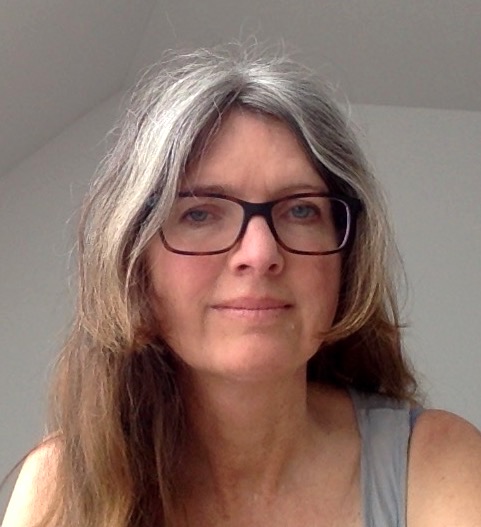Curriculum Vitae
|
Geburtsdatum |
11.07.1970, Lachine, Kanada |
|
Familienstand |
verheiratet, zwei Kinder |
Werdegang
|
1996 |
Diplom in Allgemeiner Physik, TU München |
|
1996-1999 |
Doktorarbeit am MPI für medizinische Forschung Heidelberg, Abt. Zellphysiologie (B. Sakmann) und Fakultät für Physik der Universität Heidelberg |
|
1999-2000 |
Postdoc, Zellphysiologie, MPImF Heidelberg (B. Sakmann) |
|
2000-2004 |
Postdoc, CSHL, New York, USA (Z. Mainen, K. Svoboda) |
|
2004-2011 |
Assistentin, Physiologisches Institut, LMU München (A.Konnerth, B. Sutor) |
|
2011-2013 |
Nachwuchsgruppenleiterin, Biozentrum, LMU München (B. Grothe) |
|
seit 2013 |
W2-Professorin, Institut für Zoologie, Universität Regensburg |
Sonstige berufliche Aktivitäten (Ausschnitt)
|
seit 2013 |
Koordinatorin des internationalen M.Sc.-Studiengangs „Experimental and Clinical Neuroscience“ |
|
2013, 2016, 2017 |
Organisation von Symposien zur Olfaktion mit Silke Sachse (MPI für chemische Ökologie, Jena) am CAS München, beim FENS meeting Copenhagen, in Regensburg |
|
2007-2017 |
Mitglied des Lenkungsgremiums für den DFG-Schwerpunkt “Integrative analysis of olfaction” |
|
seit 2022 |
Sprecherin der DFG-FORschungsgruppe 5424 „Modulation in Olfaction“ |
Wissenschaftliche Schwerpunkte
Unser Hauptinteresse gilt der zellulären und synaptischen Neurophysiologie im Bulbus olfactorius von Nagern, und dort insbesondere der Rolle der reziproken Synapsen zwischen Mitralzellen und Körnerzellen. Zur Beobachtung einzelner Synapsen kombinieren wir elektrophysiologische Ganzzell-Ableitungen mit hochauflösendem Zwei-Photonen-Ca2+-Imaging und Zwei-Photonen-Uncaging von Transmitter, ergänzt durch Modellierung. Damit konnten wir inzwischen nachweisen, dass die reziproken Synapsen auf Seiten der Körnerzellen wie unabhängige Mini-Neuronen agieren können. Daneben verfolgen wir den systemischen Ansatz, mittels einer semi-intakten Nase-Hirn-Präparation sensorische Verarbeitung in vitro zu untersuchen, wobei insbesondere die Rolle von Netzwerkoszillationen von Interesse ist.
Förderpreise und Auszeichnungen
|
1989-1995 |
Bayerisches Begabtenstipendium |
|
1996-1999 |
Mitglied des DFG-Graduiertenkollegs „Molekulare und zelluläre Neurobiologie“, Heidelberg |
|
2000-2003 |
Emmy-Noether-Stipendium der DFG |
|
2001 |
Schloessmannpreis “Optical methods in biology” (Max-Planck-Gesellschaft) |
|
2011-2018 |
BMBF-Nachwuchsgruppe |
|
Gutachtertätigkeiten
|
Journale |
Journal of Neuroscience, Nature Neuroscience, Journal of Computational Neuroscience, Journal of Neurophysiology, Pflügers Archiv, Journal of Physiology, Journal of Neuroscience Methods, Neuron, PLOS One, Frontiers of Neuroscience, Journal of Neurophysiology, eLife, Nature Communications; seit 2022 academic editor bei PLOS Biology |
|
sonstiges |
Wellcome Trust, DFG, Minerva Foundation, Agence Nationale de Recherche, BSF (Binational Science Foundation US-Israel), VW-Stiftung, EU ERA NET; seit 2017 Gutachterin für DFG-SFB, DFG-FOR; |
Ausgewählte Publikationen
-
Aghvami S.S., Kubota Y., Egger V. (2022) Anatomical and functional connectivity at the dendrodendritic reciprocal mitral cell– granule cell synapse: impact on recurrent and lateral inhibition. Front. Neural Circuits. https://doi.org/10.3389/fncir.2022.933201
-
Lage-Rupprecht V., Zhou L., Bianchini G., Aghvami S.S., Rozsa B., Sassoé-Pognetto M. & Egger V. (2020) Presynaptic NMDA receptors cooperate with local action potentials to implement activity-dependent GABA release from the reciprocal olfactory bulb granule cell spine. eLife 2020;9:e63737 doi: 10.7554/eLife.63737
-
Egger V., Diamond J.S. (2020) A17 amacrine cells and olfactory granule cells: parallel processors of early sensory information. Front. Cell. Neurosci. https://doi.org/10.3389/fncel.2020.600537
-
Mueller M., Egger V. (2020) Dendritic integration in olfactory bulb granule cells: Threshold for lateral inhibition and role of active conductances upon simultaneous activation. PLOS Biology. doi.org/10.1371/journal.pbio.3000873
-
Lukas M., Suyama H., Egger V. (2019) Vasopressin cells in the rodent olfactory bulb resemble non-bursting superficial tufted cells and are primarily inhibited upon olfactory nerve stimulation. eNeuro:ENEURO.0431-0418.2019. doi:10.1523/eneuro.0431-18.2019
-
Go M.A.*, Mueller M.*, Castanares M.L., Egger V.*, Daria V.* (2019) A compact holographic projector module for high-resolution 3D multi-site two-photon photostimulation. PLOS ONE doi: 10.1371/journal.pone.0210564 (*: shared first/last authorships)
-
Aghvami S., Müller M., Araabi B.N., Egger V. (2019) Coincidence detection within the excitable rat olfactory bulb granule cell spines. J. Neurosci. 39, 584-595. doi: 10.1523/JNEUROSCI.1798-18.2018
-
Bywalez W.G., Ona-Jodar T., Lukas M., Ninkovic J., Egger V. Dendritic arborization patterns of small juxtaglomerular cell types within the rodent olfactory bulb. Frontiers in Neuroanatomy 10, 127 (2017) doi: 10:3389/fnana.2016.00127 (2017)
-
Pérez de los Cobos Pallares F., Stanic D., Farmer D., Dutschmann M., Egger V. An Arterially Perfused Nose-Olfactory Bulb Preparation in Rat. J. Neurophysiol. 114, 2033-2042 (2015)
-
Bywalez W.G., Patirniche D., Rupprecht V., Stemmler M., Herz A.V.M., Pálfi D., Rózsa B., Egger V. Local postsynaptic voltage-gated sodium channel activation in dendritic spines of olfactory bulb granule cells. Neuron 85, 590-601 (2015)
-
Stroh O., Freichel M., Kretz O., Birnbaumer L., Hartmann J., Egger V. NMDA-receptor dependent synaptic activation of TRPC channels in the olfactory bulb. J. Neurosci. 32, 5737–5746 (2012)
|

